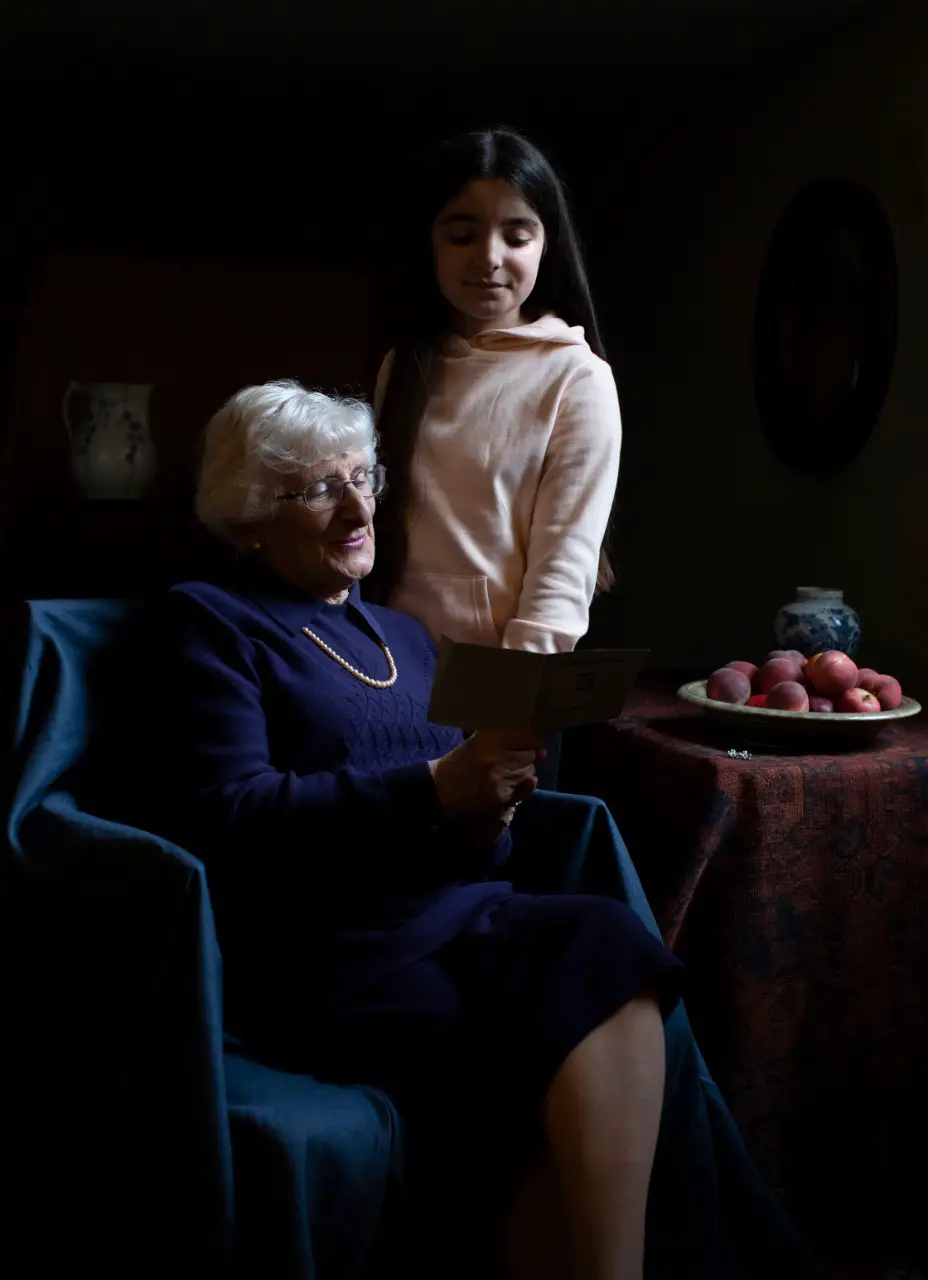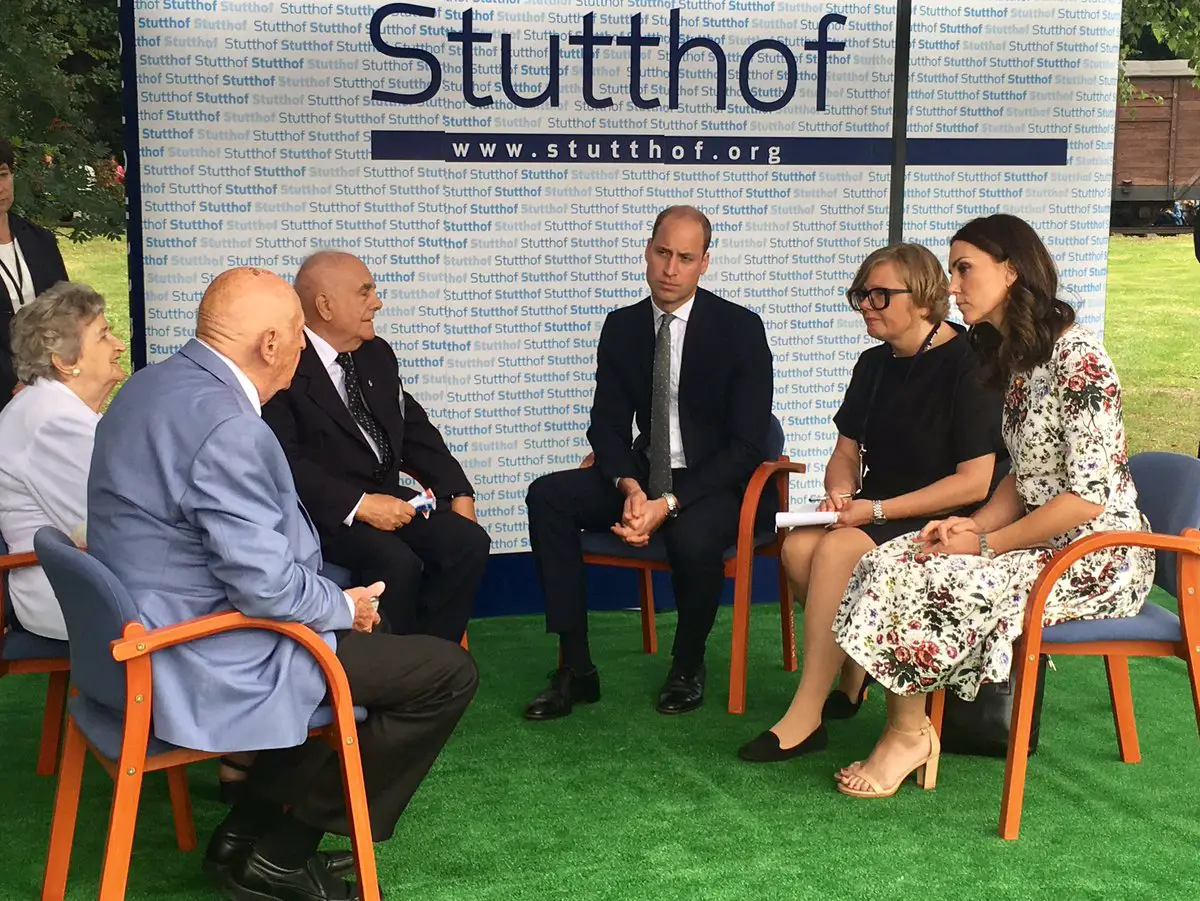
Ahead of 75th Anniversary of the Liberation of Auschwitz, The Duchess of Cambridge became the part of a very special project to mark the Holocaust Memorial Day. Yesterday, Kensington Palace released two moving portraits taken by Duchess of Cambridge that features Two Holocaust survivors – Steven Frank BEM and Yvonne Bernstein.

The project that came alive with a collaboration of Holocaust Memorial Trust UK, Jewish Newspaper and The Royal Photography Society, aims to honour the victims of the Holocaust and to celebrate the full lives that survivors have built in the UK. The photographs will form part of an exhibition opening later this year, bringing together 75 powerful images of survivors and their family members to mark 75 years since the end of the Holocaust. Today 4 portraits in total were released. About the project Holocaust Memorial trust Said,
We are pleased to have worked in partnership with Jewish News and the Royal Photographic Society (RPS) on this exciting project. The project aims to honour the victims of the Holocaust and to celebrate the full lives that survivors have built in the UK, and was originally conceived by Justin Cohen of the Jewish News.
Each of the portraits depicts the special connection between a survivor and younger generations of their family, who over the coming years will carry the legacy of their grandparents. However, the project also aims to inspire people across the UK to consider their own responsibility to remember and share the stories of those who endured persecution at the hands of the Nazis.
Olivia Marks-Woldman, Chief Executive of the Holocaust Memorial Day Trust, said of the project: ‘We are so pleased to be part of this project, as people from across the UK come together to mark Holocaust Memorial Day. The exhibition will be a fitting way to mark 75 years since the world was left scarred by the Holocaust. The survivors featured in these portraits all have very different stories, but each of their lives has been fundamentally changed by the trauma and loss they experienced. What connects these individuals is that, after systematic persecution, they all made the UK their home and the country has been enriched by them and their families.

Each portrait depicts the special connection between a survivor and younger generations of their family, who will carry the legacy of their grandparents in the coming years. About the project and her experience of photographing the survivors, Duchess said,
“The harrowing atrocities of the Holocaust, which were caused by the most unthinkable evil, will forever lay heavy in our hearts. Yet it is so often through the most unimaginable adversity that the most remarkable people flourish. Despite unbelievable trauma at the start of their lives, Yvonne Bernstein and Steven Frank are two of the most life-affirming people that I have had the privilege to meet. They look back on their experiences with sadness but also with gratitude that they were some of the lucky few to make it through. Their stories will stay with me forever.”
The Duchess of Cambridge took an image of Steven Frank BEM, now 84, who was originally from Amsterdam survived multiple concentration camps as a child. He was joined by his two granddaughters Trixie and Maggie in the picture. Steven and his grandchildren included meaningful items in the portraits – including a pan that his mother kept with them throughout their time in the camps and tomatoes from his garden. When Steven was in the Theresienstadt camp as a child, he helped another prisoner grow tomatoes. About these pictures Steven said,
I would hope that the people who look at these pictures not only look at the beauty of the photography, but they will also think of the people and their families that they lost in the Holocaust.
Steven was sent to Westerbork transit camp and then on to Theresienstadt. Steven and his brothers were 3 of only 93 children who survived the camp, out of 15,000 children sent there.

The Duchess also photographed a German survivor Yvonne Bernstein with her granddaughter Chloe. Yvonne was hidden as a child in France, travelling in the care of her aunt and uncle, frequently changing homes and names. Yvonne holds her ID card from Germany, dated 3 March 1939. It has the letter ‘J’ stamped on it – one of the many ways Jewish people were singled out and separated from the rest of the population.
The whole project was proposed by Justin Cohen, who shared how this whole idea became a reality in a post he wrote for Jewish Newspaper. Read the full text here.
Having approached the Palace six months ago with the seeds of an idea for a photography project involving the Duchess to mark 75 years since the liberation of Auschwitz, I was delighted (not to mention surprised given the weight of requests the Royals receive) to receive a call asking for more details. Further calls followed and it wasn’t long before Palace aides suggested bringing in the Royal Photographic Society, where she is a patron, to help make my vision of 75 images a reality, and involving the families of survivors to highlight their fortitude in building full lives after the horrors.
But I didn’t dare believe this project would happen until I learnt how much time and thought the Duchess was personally putting into it. The fine art graduate spent several days researching what she could bring to the table in order to best capture these individuals for the future. She was at pains to ensure the survivors were comfortable with the vision and that the spotlight was on the heroes to be pictured and not the Duchess herself. The idea of an exhibition bringing together all 75 images – most of which will be taken over the coming months by fellows of the RPS – followed.
Last month, the Holocaust Memorial Day Trust came on board to support the initiative and spoke in strict confidence to survivors to be photographed both by The Duchess and by RPS. We are also honoured to reveal the first cohort of these images today. Before meeting Steven Frank and Yvonne Bernstein, The Duchess spent significant time preparing for the photography session, and once they had arrived she spent nearly two and a half hours with them, getting to know them and their stories, and taking their photographs. Why give you all this background? It’s crucial because it shows that our Royal Family are determined to follow up oft-repeated words of remembrance with practical steps as, day by day, we bid farewell to more survivors. It shows they are personally ready to take on the message of the survivor generation to challenge all forms of hatred wherever it rears its ugly head. As the Duchess and Prince William wrote in the visitor’s book at Stutthof concentration camp two years ago: “All of us have an overwhelming responsibility to make sure that we learn the lessons and that the horror of what happened is never forgotten and never repeated.” In other words, the message is about the here and now at least as much as about the past.

Palace also released some behind the scene pictures when Catherine met with the survivors. Photographs were taken at Kensington Palace earlier this month, and because both survivors have strong links to the Netherlands, Catherine was inspired by 17th-century Dutch painter Johannes Vermeer, who specialised in interior domestic scenes. The pictures were taken next to a window that brought in light from the east, the direction of Jerusalem. Duchess of Cambridge continued,
While I have been lucky enough to meet two of the now very few survivors, I recognise not everyone in the future will be able to hear these stories first hand. It is vital that their memories are preserved and passed on to future generations so that what they went through will never be forgotten. I recall reading the Diary of Anne Frank as a young girl. Her sensitive and intimate interpretation of the horrors of the time was one of the underlying inspirations behind the images. I wanted to make the portraits deeply personal to Yvonne and Steven – a celebration of family and the life that they have built since they both arrived in Britain in the 1940s.
The other two portraits include a picture of John Hajdu, who survived the Budapest Ghetto, with his grandson Zac taken by South African photographer Jillian Edelstein. John said, “When I give my talks I show family photos because I think it’s so important for them to see us as human beings, especially if they have just seen images of people in camps. I think the fact that the exhibition will include so many different experiences is so important – it will give a much broader idea of what it was like during the Holocaust rather than just hearing from one survivor.”

You might remember that Duke and Duchess of Cambridge met with Holocaust survivors during their Poland tour in July 2017. The couple visited Stutthof – which was amongst the worst in the Nazi concentration camps causing the deaths of tens of thousands. That day, William and Catherine met two survivors Zigi Shipper and Manfred Goldberg who shared their harrowing stories. Thanking the Survivors, Catherine said “What you have been through and you still hold in your memories must be extremely difficult to speak about. Thank you very much for meeting us.”
On Monday, the Duke and Duchess will attend the UK Holocaust Memorial Day Commemorative Ceremony in Westminster.
Delayed by the pandemic but thrilled to be working with @I_W_M to showcase 75 survivor family portraits next summer including those taken by the Duchess of Cambridge. This will be the culmination of our collaboration with @The_RPS @HMD_UK @KensingtonRoyal https://t.co/1TfNApL0Hc
— Justin Cohen (@CohenJust) November 26, 2020
Update: Imperial War Museum has unveiled the details of their much-anticipated ‘Shoah exhibit’. The exhibit will be a permanent part of the Museum that will display the portraits of the Holocaust Survivors. The new Holocaust Galleries in London will include the portraits clicked by The Duchess of Cambridge.
“We’re delighted to confirm that IWM London will host a photography exhibition in partnership with the Royal Photographic Society (RPS), [the Holocaust Memorial Day Trust] and Jewish News, sharing 75 portraits of Holocaust survivors with their children and grandchildren,” said IWM’s director of content Gill Webber. Each of the portraits depicts the special connection between a survivor and younger generations of their family, who over the coming years will carry the legacy of their parents and grandparents.
The exhibition is expected to open in the summer of 2021.
